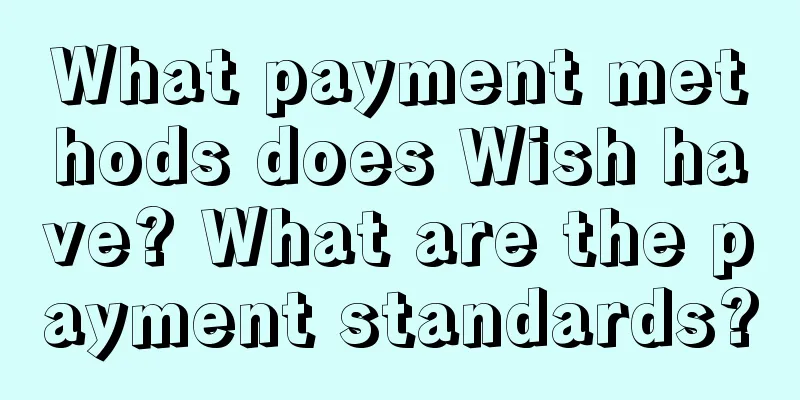What to do if no one clicks on your article? 5 suggestions for new media operators!

Everyone who works in new media must often think about a question: What kind of content do the people who follow me like to forward? Everyone wants to have a secret method to get others to forward their posts crazily. I have often pondered this question and have tried it on multiple different accounts. Secret method, maybe there is! But every time I write to you, it is a method, it is definitely useful! I dare not call it a secret method. As I said: the method is the method, the result is the result, it may be effective but it is not a shortcut. This has been explained very clearly. After you have a common understanding, you can continue reading. 01If you want readers to share your content, first of all, you must make sure that they are interested in your content, right? How can you be enthusiastic about sharing content that you have no interest in? So what kind of content are people generally interested in? There are 2 directions for sure: 1) To satisfy curiosity Curiosity is one of the core intrinsic motivations of human behavior and the most reliable topic selection direction for content creation. Human curiosity is endless. Everything that is unknown, new, subversive, innovative, insightful, and breaks common sense... can easily arouse people's interest. 2) Related to me People will always care about the content that is relevant to them, but not necessarily the other things you talk about. Especially in an era where attention is extremely scarce, content is strongly associated with users and highly relevant to "me", which gives us more opportunities! Whether it is video, audio, or graphics, when creating content, we can first highlight the content that is relevant to "me" and use more information within the user's circle of concern. For example, many new media accounts will deliberately create a character and tell a story about a protagonist who is similar to the target audience, so that readers will think, " Isn't this talking about me? " The result is a high degree of involvement. Some people will clearly describe the region, age, gender, occupation, social identity and other labels of the corresponding group of people, so that users can know at a glance that this information is related to "me". For example, "Social Guide for Post-80s and Post-90s". 02Of course, readers will not share it immediately after they become interested. By nature, everyone likes to share. How many people have you seen who can keep a secret? But people are all profit-seeking, so who would share without a reason? It's like we want to sell a product. Although everyone has the desire to buy it, what is the reason for people to buy it? If not, why would people buy it? Similarly, if you want readers to share your article, ask: What is your reason for people to share it? The more sufficient and tempting the reasons you provide for sharing, the more people will share. 03First of all, the quality of the content itself is of course a strong reason, and it is the basis of everything. Who would be willing to recommend a bad product? If the content is worthless, difficult to read, and illogical, readers will immediately turn off the content, so how can it be shared? After working in new media for a while, I actually have a rough idea of whether a piece of content is good or not. If the content itself is not thoughtful, why force it? Mr. Ogilvy has two opinions on advertising copy, which are also appropriate here: Consumers are not morons, they are your wives and daughters. If you think a simple slogan and a few boring adjectives can induce them to buy your products, then you underestimate their intelligence. They need you to provide them with all the information. Never make an advertisement that you would not want your wife and son to see. You probably wouldn’t have the idea of deceiving your own family, and you certainly can’t deceive my family. As for the content, the first thing is the topic selection. I have sorted out some very reliable and popular topic selection directions before, you can refer to:
Of course, a topic is a topic, and a popular article is a popular article. They are related but not equal. It's just an extra layer of possible protection. In addition, opinions and unique insights have always been favorites for promoting content dissemination. A lot of content may have the same angle, the same hot topics, and even the same stories, but novel perspectives are unique. Good content must have its own stance and opinions. Don’t just be moderate, but sharp and tricky. No matter how good the content is, it is only of high quality. But opinions with personal will are the weapon to prompt readers to resonate and forward, and opinions are often the detonating point. Of course, the use of operational means and the enhancement of relationships are also reasons for sharing. For example, you have a good relationship with users and interact with them frequently; you often organize activities and have a high stickiness with users; or you have copywriting that guides sharing; or you have activities in the content that stimulate sharing - get red envelopes, get information, join groups, etc.... This also provides reasons for people to share. Let me emphasize one more point: the effect of forced sharing is definitely not as good as active triggering, and sharing cannot harm the interests of readers. You wrote an article called "Boss? Just a Big Fool" and the content is very convincing, but do you think readers would be so willing to share it on WeChat Moments? Probably not, after all, so many people are watching it. But it is also possible that it was forwarded to the group or friends. We also need to consider the positivity of the content, the content itself cannot be too negative , especially the title, you need to manage the user's expected experience. If you only consider opening and recklessly use clickbait titles, then your title will give users too high expectations. Although the content itself is good, they will think you are using clickbait titles and will not share it. They will not be willing to give the same experience to their friends. The title should benefit yourself and the users. This is also your reason. 04Some people say: The quality of the content I create is very high, and the user feedback is also quite useful, so why is there so little sharing? Isn't it agreed that high-quality content is enough? Is the quality not high enough? Not necessarily! ! There is a phenomenon: for a lot of content, your users will choose to collect and reward it, but are unwilling to forward or share it. This situation has happened too many times. In fact, many accounts that write vertical articles have many collections but few reposts. It’s not that the content is bad, it’s just that users are unwilling to forward it. At this time, the question we need to think about is how to make the useful content have more "dissemination attributes". This brings us to social currency. In life, money is the easiest to circulate; on social media, social currency is the easiest to circulate (forwarding and sharing), and the key to dissemination is to increase the social attributes of the content. The social currency of this content mainly includes:
If your content is of very high quality and has enough social attributes (providing topics for conversation, helping others, showcasing your image, facilitating expression, and promoting comparison), then this can greatly increase the chances of being forwarded. After creating your content, ask yourself: How good is my content? Can it serve as social currency for the reader? What reasons might he have for sharing it! However, nothing is absolute. It is not that if you provide enough social currency, users will definitely forward it. This is the next question. 05When reading an article, readers may also have a psychological activity: "Oh, this is good information, I will save it quickly. I don't want others to find it." This is a typical self-protection mentality, the protection of knowledge. Sharing a high-quality piece of content can help you build your personal image and consolidate your social status. Whether users choose to share or just collect it depends on the category of your useful information. Lao Zei has previously divided common useful content into two categories: "easy to share" and "difficult to share", and I'm listing them here for your reference. Easy-to-share dry goods: Although this type of content contains a lot of professional knowledge, there is one key point: it is not so direct in improving one's core competitiveness, or it is not so easy to produce immediate results. On the contrary, sharing is full of powerful social currency and can shape your self-image very well. Therefore, there is no need to overly “ protect ” this type of content. Most people will just share it.
Hard-to-share information: Although this type of dry goods also have social currency attributes, they are more of a variety of practical skills, shortcuts, unique tricks, and high-quality resources. The most important thing is that it can be used immediately in a short time, so who would be willing to share it!
Of course, not all content is meant to be forwarded by others. That would be a bottom line. In my opinion, both are needed. You can adjust the ratio of the two types of "easy to share" and "difficult to share" based on your own situation and find a rhythm that suits you. Creation is not easy. Regardless of success or failure, think more. I hope the above will inspire everyone. Author: Mumu Old Thief Source: WeChat public account: "Mumu Laozei (ID: mumuseo)" |
<<: How can something so ugly that it hurts the eyes become a trend?
Recommend
I have been working in data for ten years, and this is the first time I have seen such a great data analysis method
This article deeply explores the application of da...
With 1.55 million followers added in one week, how funny are the most contrasting sisters on Douyin?
This article starts with Doraemon's family, an...
Such a vicious Mother's Day copywriting
This article introduces the reasons why this year’...
Make a good VLog of women's life and earn 50,000 yuan a month
Do you want to make money easily by shooting video...
How to make a good career choice? What is the logic behind career choice and career planning?
In the ever-changing economic environment and work...
What is the Amazon Account Health Rating feature? Detailed introduction
Currently, there are nearly 2 million sellers on A...
Betting on athletes, which brands win?
In this dual competition of sports and business, h...
Five money-making tracks, find the opportunity that suits you
The most important thing when making money is dire...
Douyin takeaway, the sound gradually fades
Douyin Takeout has gradually adjusted its plan sin...
The Rational Side of Delayed Gratification
Delaying gratification is not an absolute concept,...
Is it easy to sell on Amazon International Station? Which station is easier to sell on?
If merchants want to enter the e-commerce industry...
Which is better, Amazon or Lazada? How to choose?
If you want to do cross-border e-commerce, you can...
Xiaomi SU7, why is it so popular?
With its unique product positioning, user-friendly...
Social Marketing: A fission activity, 20,000 followers, but 0 conversion rate? Here are the reasons
In the stock era, traffic has become a scarce thin...
Which country is Amazon Web Services based in? What is its relationship with Amazon?
Amazon Web Services (AWS) is one of the world'...









